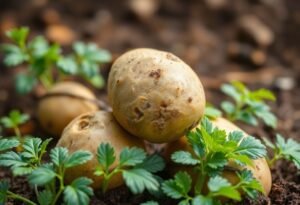What is Sowing?
Before delving into the intricacies of sowing, it’s important to understand what this process really entails. Sowing refers to the act of placing seeds into the soil, leading to their growth and flowering. In gardening, sowing is a fundamental step, and the right approach can determine the success of your crops. Whether you’re planning to sow a lawn or flower beds, it’s essential to grasp the soil conditions and choose the right seeds.
Best Seed Varieties for Sowing
Choosing seed varieties is crucial for success in gardening. Start by investing in seeds that are suited to your local climate. Basil, mint, and popular flowers like nasturtium or sunflowers are great options. Remember to check sowing depth and spacing recommendations before planting. Sowing several varieties together can also yield unexpected results and introduce diversity into your garden.
Preparing the Soil for Sowing
The success of sowing begins with proper soil preparation. Thorough weeding, loosening, and enriching the ground are essential steps. Conducting a soil test to assess its pH and nutrient content is also beneficial. Keep in mind that the right soil structure lays the foundation for both seeds and your eventual success. After completing the preparations, it’s time for the actual process of sowing, which should be done carefully and methodically.
Effective Sowing Techniques
The choice of sowing techniques depends on the type of seeds you wish to plant. You can opt for hand sowing, which allows for greater precision, or use seeders, which speed up the process. Regardless of the method, maintaining proper spacing is crucial for optimal plant growth. Applying mulch after sowing is an additional step that helps retain moisture and minimizes weed growth.
Care After Sowing
Post-sowing care is crucial. Monitoring soil moisture, regular watering, and protecting against pests are essential tasks. Often, it is during the care phase that the most important decisions affecting plant development are made. Regularly observing and tending to your garden brings satisfaction and joy.
Benefits of Sowing Your Own Plants
Sowing your own plants in the garden is not only pleasurable but also yields health, economic, and ecological benefits. A personal garden provides fresh herbs, veggies, and flowers, which are incomparable to store-bought varieties. Additionally, by nurturing nature, you help sustain the local ecosystem; sowing nectar-producing plants also positively impacts biodiversity.
Conclusion
In conclusion, sowing is a process that weaves together passion, science, and the art of gardening. It’s a moment when you can create something of your own while nurturing your connection with nature. I encourage you to take up the challenge and embark on your own journey into the world of gardening. Investing time and effort into your own garden is worthwhile—the results will bloom, both literally and figuratively.
Disclaimer
This article is for informational purposes only. Sowing activities may vary based on location, and results can differ depending on techniques used and weather conditions.

















